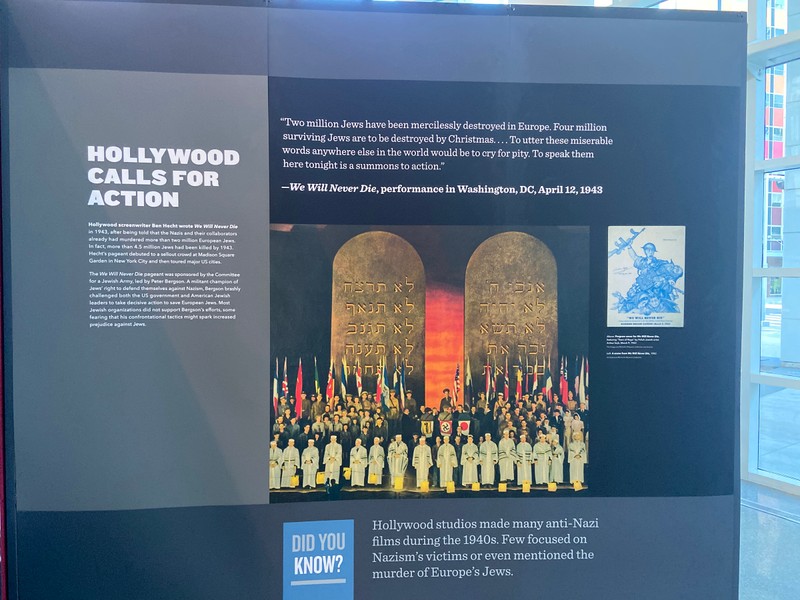Hollywood Calls for Actions (Americans and the Holocaust)
Introduction
Author-Uploaded Audio
Listen to a narration of this entry's description by Larry Johnson.
Text-to-speech Audio
After the US government confirmed that Nazi Germany and its collaborators were murdering Jews, activists in the Jewish community and in Hollywood pressured the US government to take action to try to rescue the victims. Hollywood celebrities staged a massive pageant called “We Will Never Die” that sold out Madison Square Garden in New York City twice in the same night and toured major cities throughout the country in 1943.
As indicated in this “Did You Know,” most Hollywood studios, on the other hand, shied away from directly addressing Nazi persecution and murder of Jews. Consider the film Casablanca for instance, which has characters escaping from concentration camps, but never mentions that the Nazis specifically targeted Jews. One exception was Charlie Chaplin’s film The Great Dictator, which he produced independently.
Images

Backstory and Context
Text-to-speech Audio
Metropolitan Library System is one of 50 U.S. libraries selected to host AMERICANS AND THE HOLOCAUST, a traveling exhibition from the U.S. Holocaust Memorial Museum that examines the motives, pressures, and fears that shaped Americans’ responses to Nazism, war, and genocide in Europe during the 1930s and 1940s.
The Americans and the Holocaust exhibit will be on display at the Downtown Library, along with a series of related special events from Thursday, January 5 to Sunday, February 12.
Based on extensive new research of that period, Americans and the Holocaust addresses important themes in American history, exploring the many factors — including the Great Depression, isolationism, xenophobia, racism, and antisemitism — that influenced decisions made by the U.S. government, the news media, organizations and individuals as they responded to Nazism. This exhibition will challenge the commonly held assumptions that Americans knew little and did nothing about the Nazi persecution and murder of Jews as the Holocaust unfolded.
Drawing on a remarkable collection of primary sources from the 1930s and ’40s, the exhibition focuses on the stories of individuals and groups of Americans who took action in response to Nazism. It will challenge visitors to consider the responsibilities and obstacles faced by individuals — from Franklin Delano Roosevelt to ordinary Americans — who made difficult choices, sought to effect change, and, in a few cases, took significant risks to help victims of Nazism even as rescue never became a government priority.
Americans and the Holocaust was made possible by the generous support of lead sponsor Jeannie & Jonathan Lavine. Additional major funding was provided by the Bildners — Joan & Allen z”l, Elisa Spungen & Rob, Nancy & Jim; and Jane and Daniel Och. The Museum's exhibitions are also supported by the Lester Robbins and Sheila Johnson Robbins Traveling and Special Exhibitions Fund, established in 1990.
Sources
United States Holocaust Memorial Museum. Accessed January 5th, 2023. https://www.ushmm.org/.
American Library Association. Accessed January 5th, 2023. https://www.ala.org/.
